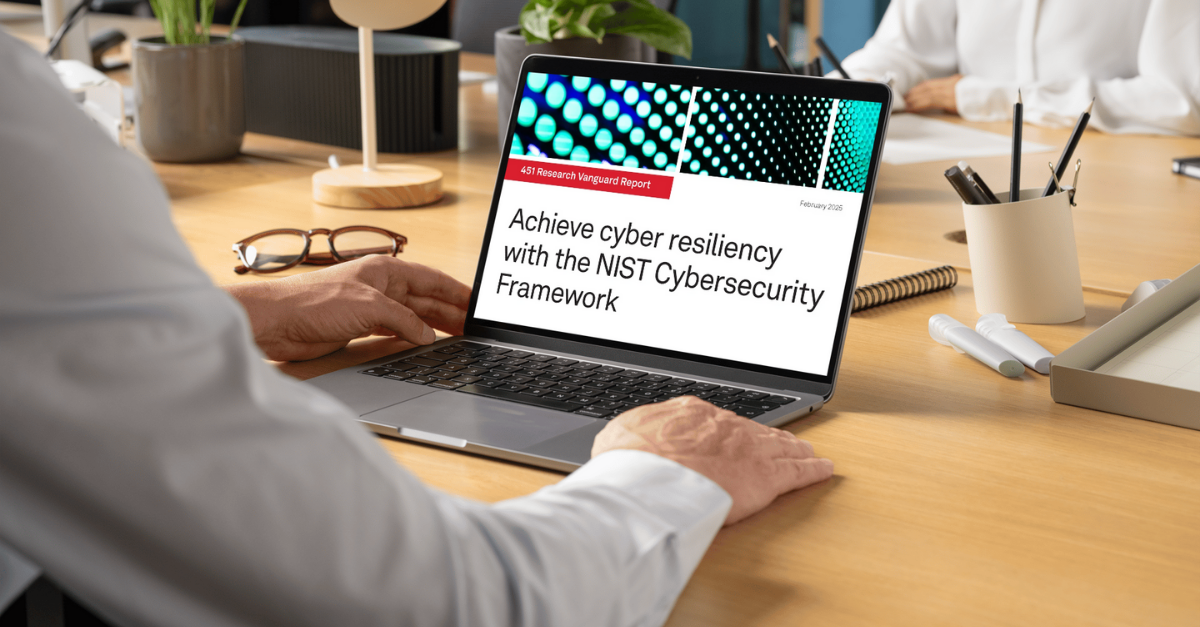Safeguarding operations: What is Business Continuity and Disaster Recovery (BCDR)?
Navigating the intricacies of modern business requires a strategic approach to uncertainties where natural disasters and disruptions are inevitable. This comprehensive guide aims to demystify Business Continuity and Disaster Recovery (BCDR), shedding light on their distinct roles and the collaborative strategy they form to fortify organizations against unforeseen business disruptions.

Navigating the intricacies of modern business requires a strategic approach to uncertainties where natural disasters and disruptions are inevitable. This comprehensive guide aims to demystify Business Continuity and Disaster Recovery (BCDR), shedding light on their distinct roles and the collaborative strategy they form to fortify organizations against unforeseen business disruptions.
What is Business Continuity and Disaster Recovery?
Understanding the foundational aspects is crucial to navigating the complex world of BCDR. Let’s unravel business continuity and disaster recovery individually before exploring how they combine to create a robust shield for organizations.
What is Business Continuity?
Business Continuity (BC), often abbreviated as BC, refers to strategies and procedures to ensure the seamless continuation of essential business functions during and after a serious disaster. It’s a proactive approach aimed at safeguarding the resilience of core business processes against a variety of potential disruptions.
At the heart of Business Continuity lies the preservation of operations, an organization’s reputation, customer trust, and overall brand integrity. A robust Business Continuity plan involves thorough risk assessments, impact analyses, and the implementation of proactive measures to mitigate potential disruptions. By understanding the intricacies of BC, organizations and business leaders can develop strategies that go beyond mere survival, contributing to long-term sustainability and critical business operations continuity.
What is Disaster Recovery?
Conversely, Disaster Recovery (DR) serves as the reactive counterpart of the BCDR strategy. It is a disaster recovery strategy focusing on rapidly restoring applications and data after a disruptive event. The primary goal of DR is to expedite the recovery of technology assets, ensuring a swift return to normal business operations. By understanding the nuances of DR, businesses can fortify their technological resilience against a myriad of potential threats.
Effective Disaster Recovery plans involve identifying critical systems and data, establishing recovery time objectives (RTOs) and recovery point objectives (RPOs), using recovery personnel, and implementing robust data backup and storage solutions. Regular testing, documentation, and communication protocols are vital components of a successful DR strategy.
Difference between Business Continuity and Disaster Recovery
While BC and DR share the overarching objective of organizational resilience, they differ in scope, timing, and specific functions, making adopting a dual approach for comprehensive organizational protection necessary.
Business Continuity plans lay the groundwork for proactive risk management, ensuring that essential functions continue without interruption. On the other hand, Disaster Recovery plans act as a safety net, facilitating the rapid recovery of IT infrastructure and data, ensuring a swift return to normalcy after a disruptive event.
Understanding the distinctions between BC and DR is essential for organizations aiming to develop a holistic BCDR strategy. By striking the right balance between these elements, businesses can achieve resilience beyond mere disaster recovery strategies.
How are Business Continuity and Disaster Recovery connected?
Business Continuity and Disaster Recovery are elements of an overall strategy. By understanding their interplay, organizations can elevate their resilience to new heights, ensuring a swift and effective response to disruptions.
For example, a disruption to resume normal operations may start with a technical failure that triggers the activation of a Disaster Recovery plan and actions by a Disaster Recovery team. However, this reactive response should seamlessly integrate with Business Continuity strategies to ensure the continued operation of essential business functions and the preservation of the organization’s broader integrity.
Importance of Business Continuity and Disaster Recovery
Investing in robust BCDR strategies is not merely a precautionary measure but a strategic imperative for modern businesses. Beyond the immediate benefits of contingency planning, BCDR strategies contribute to long-term sustainability, customer trust, and regulatory compliance.
The importance of Business Continuity and Disaster Recovery extends to aspects such as regulatory compliance, stakeholder confidence, and overall organizational processes and brand resilience. A well-crafted BCDR strategy not only ensures the survival of an organization during disruptions but also positions it as a reliable and trustworthy entity in the eyes of customers and business partners.
How a Business Continuity Plan and Disaster Recovery plan overlaps
As we navigate further, it becomes evident that the overlap between Business Continuity Plans (BCPs) and Disaster Recovery Plans (DRPs) is not coincidental but a deliberate strategy. Understanding the intersections between these plans is key to crafting a comprehensive business resilience strategy.
Business Continuity Plans focus on preserving essential critical business processes and functions, often involving risk assessments, impact analyses, and proactive measures to mitigate potential disruptions. Conversely, Disaster Recovery Plans zero in on the rapid recovery of IT infrastructure and data, ensuring a swift return to normalcy after a disruptive event.
By examining the convergence of these plans, organizations can identify synergies, streamline processes, and enhance the overall effectiveness of their BCDR strategy.
How does Disaster Recovery planning differ from Business Continuity planning?
This detailed exploration dissects the nuances of Disaster Recovery Planning and Business Continuity Planning. By understanding the key elements, best practices, and distinct roles and purposes of each, organizations can refine their approach to BCDR.
Disaster Recovery planning
Key elements
Effective Disaster Recovery Planning involves a meticulous identification of critical systems and data, establishing clear disaster recovery focuses, time objectives (RTOs) and recovery point objectives (RPOs), and the implementation of robust data backup and storage solutions.
Best practices
Regular testing and simulation exercises are vital components of DR design and planning, ensuring that the various recovery procedures and processes are not only effective but can be executed swiftly in the event of an actual disruption. Documentation and communication protocols play a crucial role in keeping all stakeholders informed and coordinated during the recovery process.
Role and purpose
Collaboration with key stakeholders, both internal and external, is integral to the success of Disaster Recovery Plans. Organizations can ensure a more seamless disaster preparedness and recovery focus and process by fostering effective communication and coordination, minimizing downtime and data loss.
The role and purpose of DR planning extend beyond immediate recovery after a major disaster strikes. It serves as a linchpin in an organization’s overall resilience strategy, contributing to the minimization of downtime, data loss, and the long-term impact on operations.
Business Continuity planning
Key elements
Effective Business Continuity Planning involves a comprehensive risk assessment and business impact analysis to identify potential vulnerabilities and formulate strategies to address them. Development of business continuity strategies includes measures to ensure the preservation of essential or critical business functions even during disruptions.
Best practices
Formulation of emergency management and response plans is a critical aspect of Business Continuity Planning, providing a structured framework for immediate actions in the face of unforeseen events. Periodic review and update of plans are essential to ensure their relevance and effectiveness in an ever-changing business landscape.
Role and purpose
Employee training and awareness programs play a crucial role in ensuring that all members of the organization are well-versed in the business continuity procedures. Coordination with external partners and suppliers is another integral component, ensuring a collaborative approach to business continuity management.
The role and purpose of Business Continuity Planning extend to the preservation of essential business functions and the mitigation of the long-term impact on operations. By taking a proactive approach to the business continuity management process, organizations can position themselves to not only survive disruptions but thrive in the aftermath.
Role of technology in Business Continuity and Disaster Recovery
Technology plays a pivotal role in fortifying businesses against disruptions in the contemporary digital landscape, acting as an enabler and providing the tools and infrastructure necessary to implement robust BCDR strategies. Cloud computing, data backup solutions, and advanced analytics contribute to the efficiency and effectiveness of these proactive strategies.
Cloud computing has revolutionized the way organizations approach BCDR. It offers scalable and flexible infrastructure, allowing businesses to store critical data offsite and ensuring accessibility during disruptions. Virtualization technologies further enhance the speed and efficiency of Disaster Recovery processes.
Data backup solutions, including regular backups and redundancy measures, ensure organizations can recover critical data. Advanced analytics contribute to risk assessments and data protection, providing insights enabling organizations to identify and proactively address potential vulnerabilities.
From cloud-based disaster-recovery-as-a-service (DRaaS) solutions to advanced analytics tools, understanding the role of technology is essential for businesses aiming to build resilient and technologically advanced BCDR strategies.
Flexential Disaster Recovery planning solutions
In conclusion, Business Continuity and Disaster Recovery are not just concepts; they are critical components of a resilient business strategy. Understanding their importance, how they interconnect, and how to leverage advanced technologies are key steps in ensuring good business continuity and an organization’s ability to weather disruptions and emerge stronger.
Flexential, as a leading player in the data center industry, offers Disaster Recovery solutions designed to meet the diverse needs of modern businesses. The integration of advanced technologies and industry expertise positions Flexential as a reliable partner for organizations seeking to fortify their resilience. Flexential offers tailored solutions that align with individual organization’s unique needs and challenges.
Ready to fortify your business against uncertainties? Schedule a consultation with Flexential and embark on a journey towards robust Disaster Recovery.






